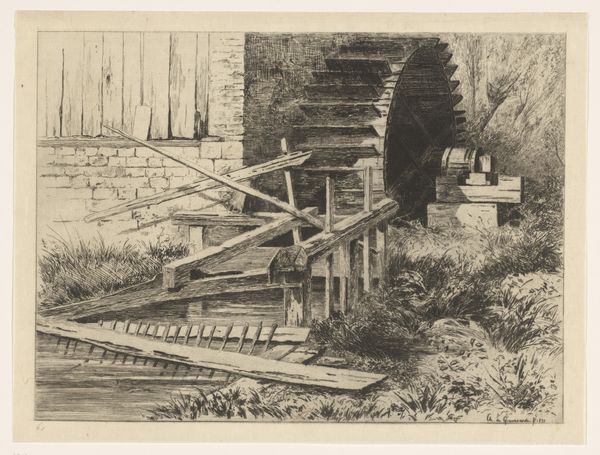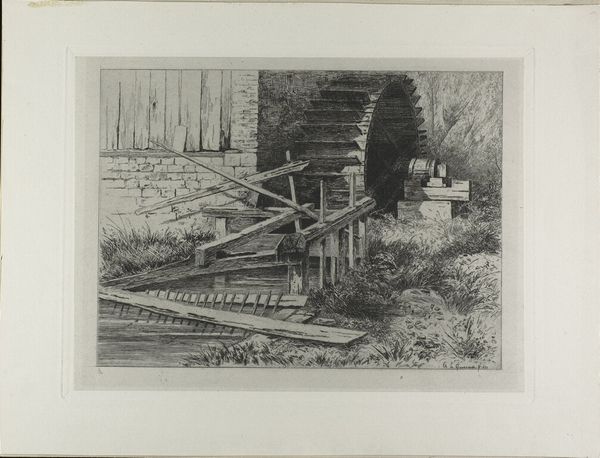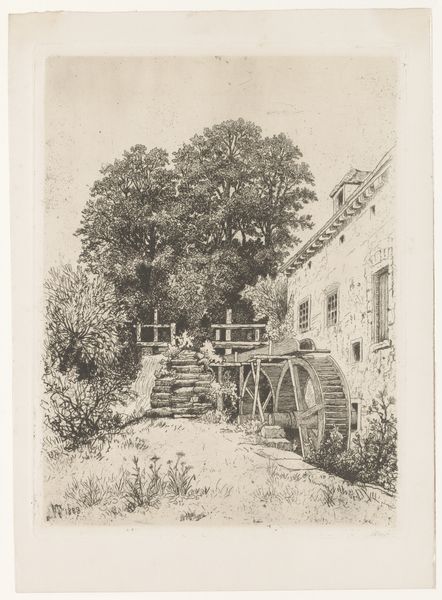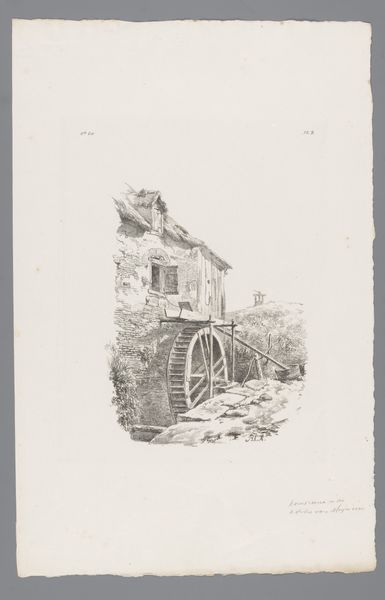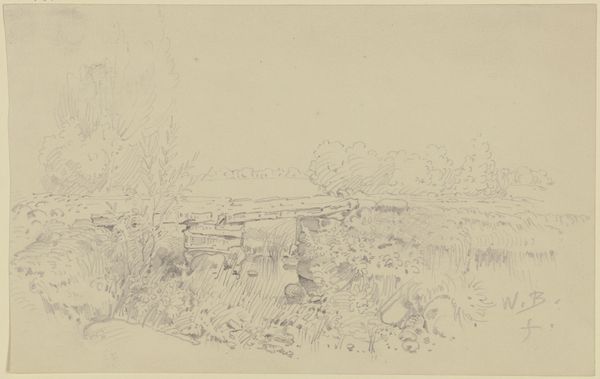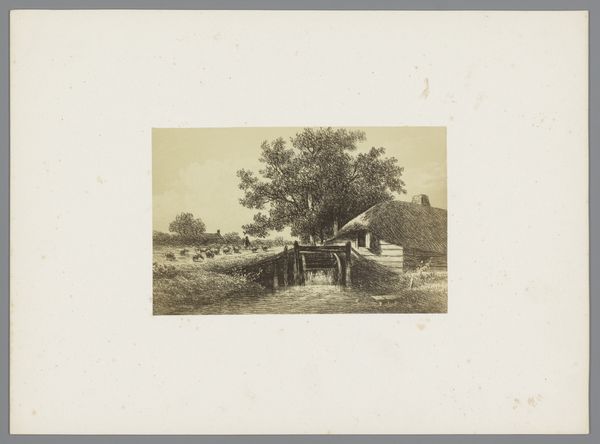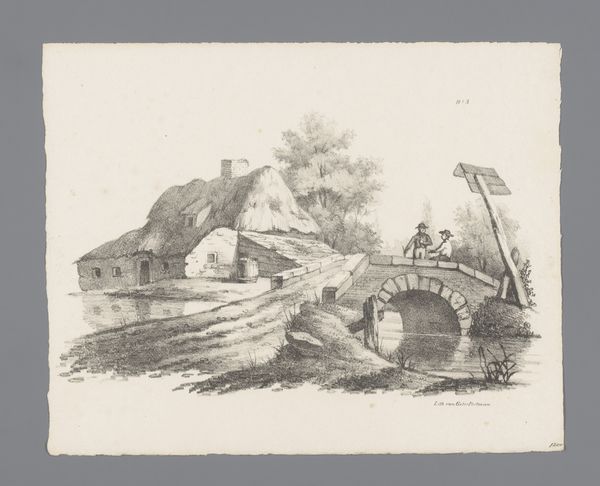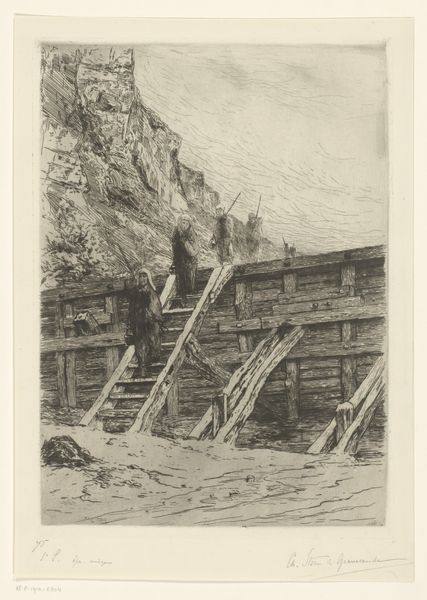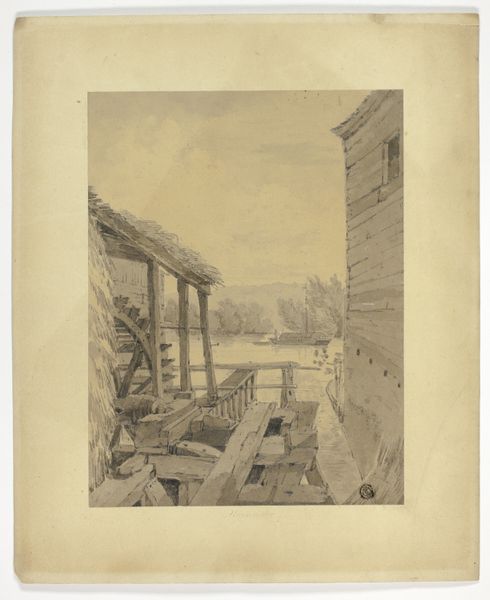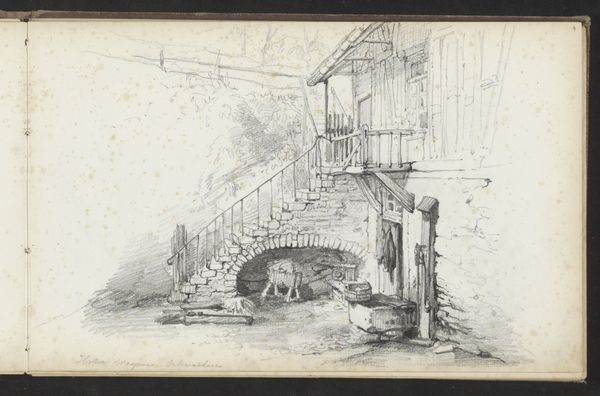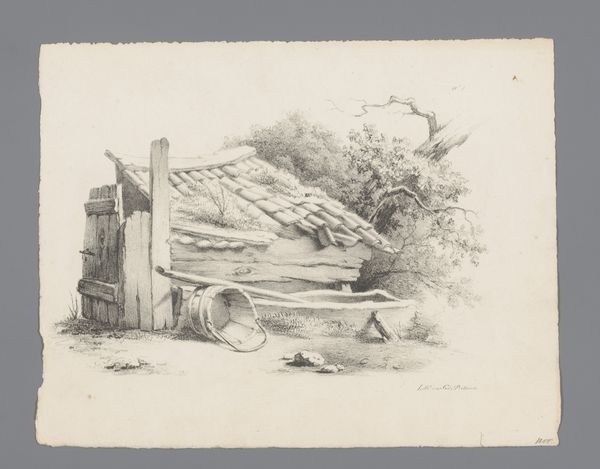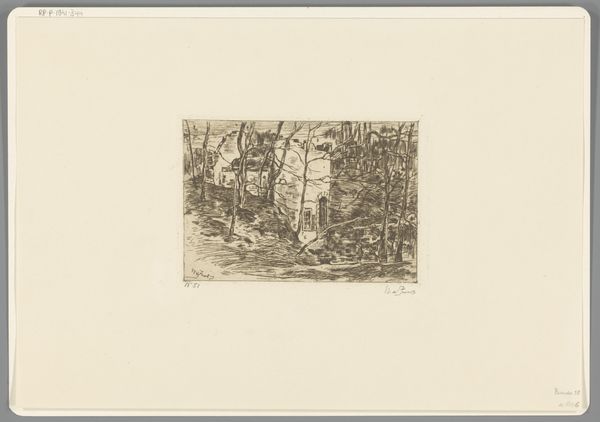
print, etching
#
dutch-golden-age
# print
#
etching
#
landscape
#
realism
Dimensions: height 266 mm, width 350 mm
Copyright: Rijks Museum: Open Domain
Curator: Looking at this etching titled "Watermolen in Veules" by Carel Nicolaas Storm van 's-Gravesande from 1873, what strikes you initially? Editor: The sheer stillness, almost a melancholic silence. The muted tones give it a sense of suspended animation, as if the mill itself has paused in its work. Curator: The artist truly captures the textures through the etching technique. We can observe the intricate lines detailing the aged wood and the coarseness of the stone in the mill's structure. This print really highlights the materiality of the site. Editor: Absolutely, and situating it in its historical context, the artwork can speak volumes about the relationship between labor, technology, and the natural world during that era. Watermills represent a specific moment in industrial transition. How the production of this print mediates the actual subject is interesting too, since printing had a transformative effect in art and labor. Curator: Exactly! Note the almost photorealistic rendition; yet this scene comes to us through the highly crafted and mediated process of etching, a labour intensive process in and of itself. How do you perceive that contrast between the raw industrial presence and the printmaking process? Editor: The crumbling structure could also represent the declining dominance of agricultural economies replaced by mechanized industry. I am also particularly struck by how he seems to aestheticize a workspace, especially a predominantly male working environment, raising questions of masculine identity within labor. Curator: It definitely gives food for thought, this intimate scene opens into much bigger topics when considering not just *what* it portrays but *how* it comes to exist as an image. The interplay between technique, subject, and socio-historical context feels especially compelling. Editor: A beautiful landscape concealing complex narratives within industry and progress—I feel enriched seeing how materials carry such weight, not only aesthetic, but societal.
Comments
No comments
Be the first to comment and join the conversation on the ultimate creative platform.
